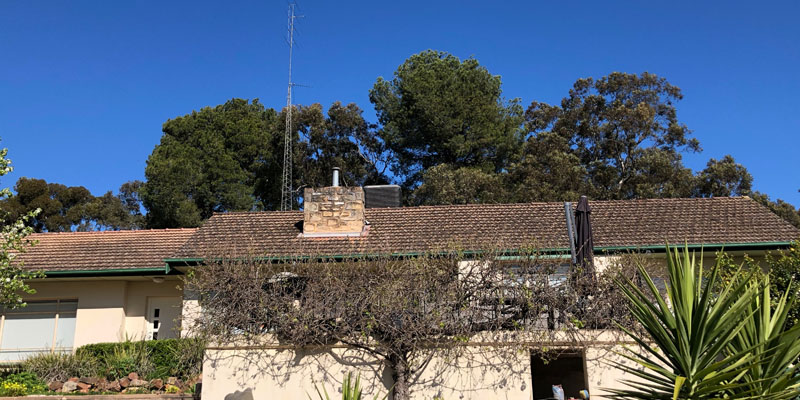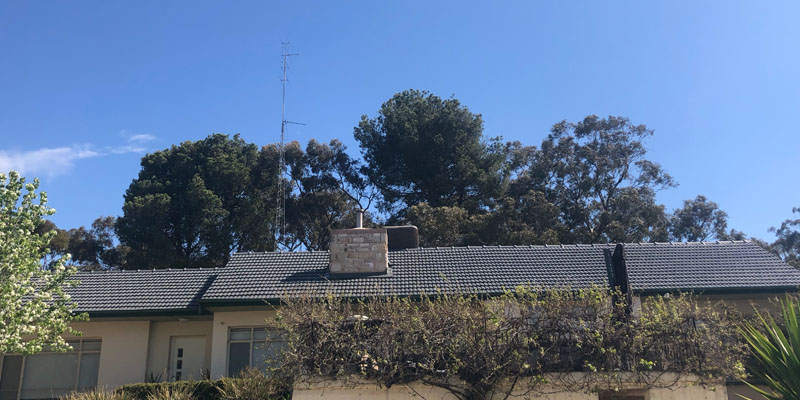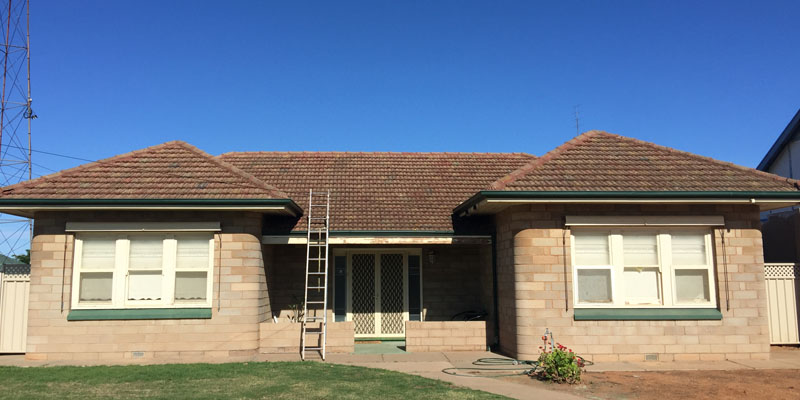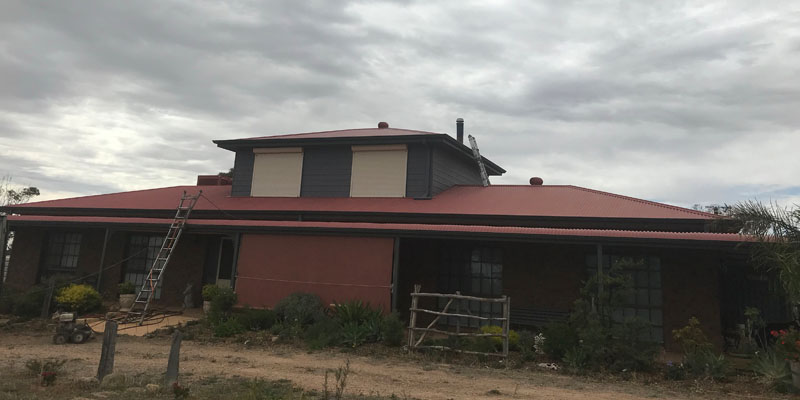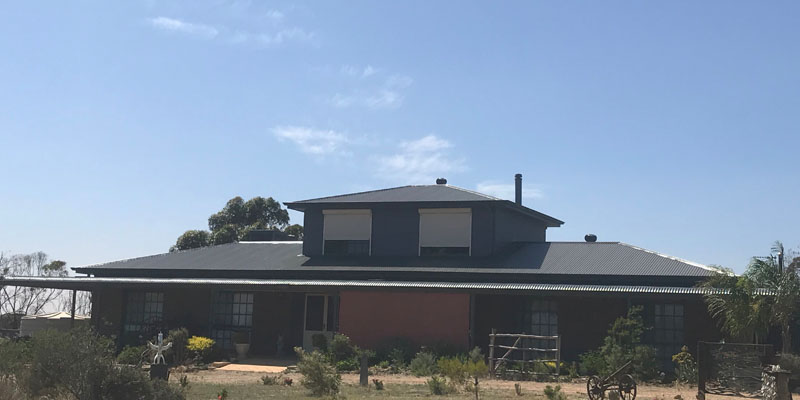Roof Repointing
Home » Roof Repointing
Roof Repointing Yorke Peninsula

Re-pointing ridge caps using (ridgebond)
Tiled roofs have ridge capping. These are the upside down Vee shaped elements at the top and sloping side edges of your tiled roof.
Firstly, the ridge capping is held down and supported by a “BED” of (sand and cement based) mortar. Unfortunately, the bedding will crack as it naturally shrinks and it does not bind the ridge capping very well. Also, the colour of the bedding does not blend in with the colour of the roof tiles or the ridges. And this is where the pointing comes in…
In the (not too distant) past, the pointing was just a thin layer of oxide coloured sand/cement. The ‘cement’ pointing was put together relying on the skill of the roofer and the thin layer had a good chance of sticking onto the bedding without cracking.
With age and movement on the roof, the bedding (and attached pointing) would start to crack – and the ridge capping will then start to dislodge itself and sometimes slide off the roof. This is when the roof has to be “repointed” – to maintain the ridge security. Usually, only the very loose bedding is removed and fresh bedding installed locally to support the ridge capping. Then the rest of the existing (sometimes cracked) bedding is prepared to receive the new pointing.
The Importance Of Repointing A Roof
There are numerous reasons why you should consider repointing a tile roof when visible damage has occurred. Disastrous consequences can occur if issues aren’t addressed, including leakages that cause damage to ceilings and affect the general structural integrity of the property. The aesthetic appearance of the property can also be affected, creating an impression of dilapidation or worse.

Roof Recleaning

Roof Painting

Roof Repointing

Roof Restoration
Repointing roof ridge tiles on a regular basis will ensure that your property maintains its condition for years to come. Given the volatile nature of Australian weather conditions, we recommend repointing a roof at least once every ten years.8




